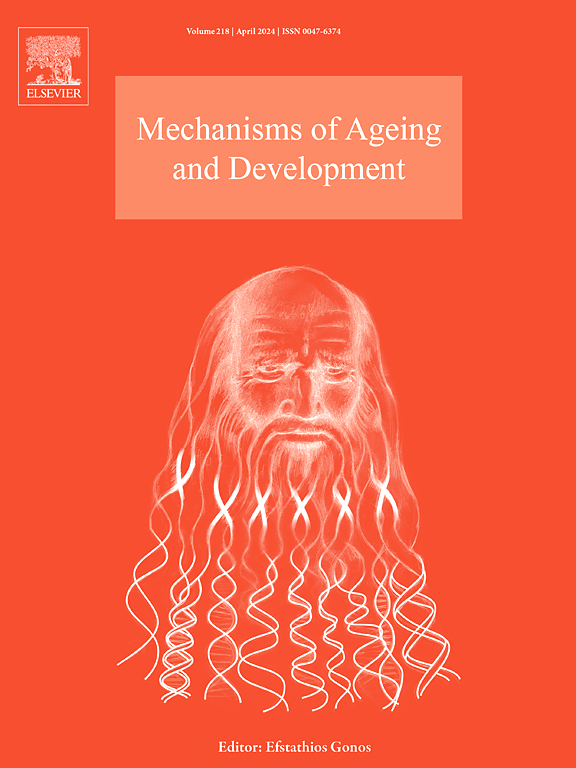Circulating microRNAs and cross sectional and longitudinal measurements of physical functioning and frailty: An explorative study in older twins
IF 5.1
3区 医学
Q2 CELL BIOLOGY
引用次数: 0
Abstract
During aging, physical functioning declines, and disability and frailty increase; phenotypes which are bidirectionally linked. MicroRNAs (miRNAs) are epigenetic regulators of various physiological processes and suggested aging biomarkers. Here we investigate the association between circulating plasma miRNAs and hand grip strength, chair stand, (Rockwood) frailty, and activity of daily living (ADL) in 86 monozygotic twins (73–88 years). In cross-sectional analysis, both individual and twin-pair level analyses were performed, the latter controlling genetic confounding. The majority (74–100 %) of miRNAs identified in the individual-level analysis were validated by twin-pair-level analysis, with 14 miRNAs showing significance (p < 0.05) in both. Longitudinal analysis (up to eight years of follow-up) yielded more significant results (75–93 miRNAs), indicating that miRNAs might be more accurate in predicting functional decline over time. Of these miRNAs, seven showed consistent directions of effects across phenotypes. For all analyses, most (65–79 %) of the observed effect sizes were negative, reflecting reduced functionality with increased miRNA levels. Enrichment analyses revealed pathways of gene expression (incl. p53- and FOXO-mediated transcription), signal transduction, the immune system, metabolism of RNA, among others. Of specific miRNAs, miR-1274a demonstrated negative association in both cross-sectional and longitudinal investigations of ADL. These findings support miRNAs as biomarkers of age-related functional decline.
循环microrna和身体功能和虚弱的横断面和纵向测量:一项对大龄双胞胎的探索性研究。
随着年龄的增长,身体功能下降,残疾和虚弱增加;表现型是双向联系的。MicroRNAs (miRNAs)是多种生理过程的表观遗传调控因子和衰老生物标志物。在这里,我们研究了86对同卵双胞胎(73-88岁)的循环血浆mirna与手部握力、椅子站立、(Rockwood)虚弱和日常生活活动(ADL)之间的关系。在横断面分析中,进行了个体和双胞胎水平的分析,后者控制遗传混淆。大多数(74-100%)在个体水平分析中鉴定的mirna通过双对水平分析进行验证,其中14个mirna具有显著性(p
本文章由计算机程序翻译,如有差异,请以英文原文为准。
求助全文
约1分钟内获得全文
求助全文
来源期刊
CiteScore
11.10
自引率
1.90%
发文量
79
审稿时长
32 days
期刊介绍:
Mechanisms of Ageing and Development is a multidisciplinary journal aimed at revealing the molecular, biochemical and biological mechanisms that underlie the processes of aging and development in various species as well as of age-associated diseases. Emphasis is placed on investigations that delineate the contribution of macromolecular damage and cytotoxicity, genetic programs, epigenetics and genetic instability, mitochondrial function, alterations of metabolism and innovative anti-aging approaches. For all of the mentioned studies it is necessary to address the underlying mechanisms.
Mechanisms of Ageing and Development publishes original research, review and mini-review articles. The journal also publishes Special Issues that focus on emerging research areas. Special issues may include all types of articles following peered review. Proposals should be sent directly to the Editor-in-Chief.

 求助内容:
求助内容: 应助结果提醒方式:
应助结果提醒方式:


